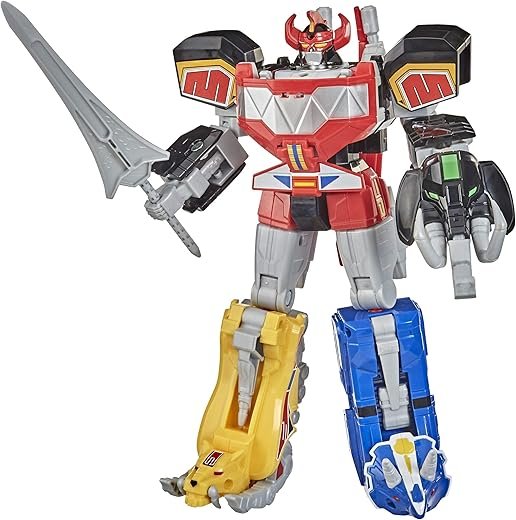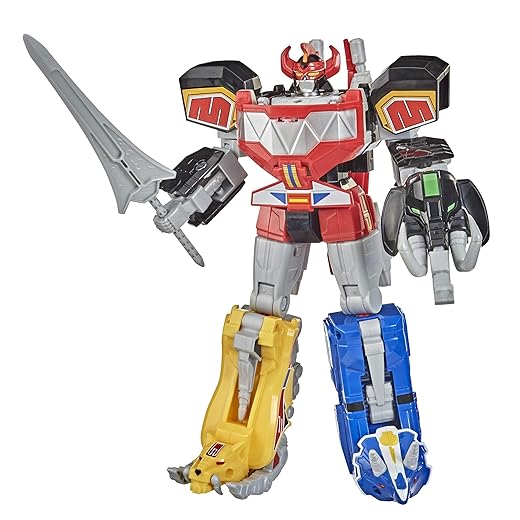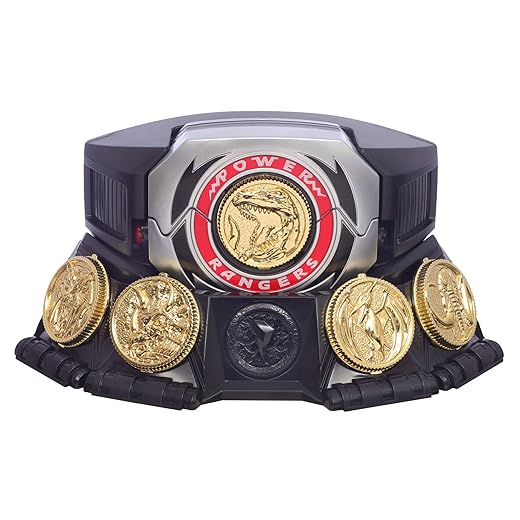
This step-by-step guide delves into the fascinating evolution of Power Ranger suits, tracing their transformation from the iconic Mighty Morphin series to the Samurai era. Readers will discover how design elements have shifted, the impact of technological advancements, and the reflection of cultural trends in these beloved costumes. A shocking fact: Did you know that the original Power Ranger suits were crafted from leftover materials from Japan’s Super Sentai series, illustrating how creativity and resourcefulness have always been at the heart of the franchise? This guide equips fans and newcomers alike with a thorough understanding of these vibrant suits, their rich history, and their significance in pop culture.
The Evolution of Power Rangers Costumes
Research the Origins of Mighty Morphin Power Rangers
Explore the original Mighty Morphin Power Rangers series, which debuted in 1993. Focus on the vibrant color schemes that defined each character, from the iconic Red Ranger to the enigmatic Black Ranger. Observe how the suits feature unique designs that incorporate both a spandex-like material and distinct helmets, showcasing individual motifs and powers. Each Ranger’s costume reflects their unique abilities and personality traits, enhancing their role within the team.
Investigate the influence of Japanese Super Sentai series, specifically the Super Sentai franchise that inspired Mighty Morphin Power Rangers. Analyze the similarities in suit design, such as the morphing sequences and color-coded outfits, which have become a hallmark of the genre. Recognize how these elements contributed to the show’s appeal, making the Power Rangers relatable and visually striking. Celebrate the significance of each Ranger’s costume as not just a uniform, but a representation of teamwork, diversity, and empowerment in the world of superheroes.
Analyze the Changes in Design Through the Seasons
Examine the series that followed Mighty Morphin Power Rangers, like Zeo, Turbo, and In Space. Note how suit designs evolved with each iteration, reflecting thematic shifts in storytelling. Pay attention to color variations, as they often signified new team dynamics or power sources. For instance, in Zeo, the suits incorporated a gold color for the first time, representing the transition to a new era of Power Rangers. The standard designs featured geometric shapes and enhanced armor, signaling a more advanced level of technology. Look for the introduction of personal insignias, which highlighted individual ranger identities and added a layer of uniqueness compared to previous seasons.
Analyze the technological upgrades in the suit design across these series. In Turbo, the suits featured a more streamlined look, showcasing a modernized aesthetic that reflected the characters’ youthfulness and vitality. Notice the usage of chrome finishes and helmet designs that included more intricate visual elements. In the In Space series, the return to a sleek, uniform design, complete with new morphers and communication devices, symbolizes a mission-focused narrative aimed at defending the galaxy. Examine how each of these changes not only marked an evolution in Power Rangers’ artistry but also mirrored the growth of story arcs, highlighting themes of teamwork, personal responsibility, and bravery in the face of adversity.
Explore the Influence of Technology on Suit Design
Examine how advancements in technology have transformed Power Ranger suit design, particularly from practical effects to CGI. Notice how earlier versions of the series relied heavily on practical effects, where suits were crafted with materials that limited movement and visual flair. As production techniques evolved, CGI became a powerful tool that allowed for the addition of intricate details, textures, and designs not achievable through traditional methods. For instance, look at “Power Rangers SPD,” where the suits featured refined designs with digital enhancements that added depth and vibrant colors, enhancing the overall aesthetic and appeal.
Consider the example of “Power Rangers Mystic Force,” which further capitalized on CGI to create visually stunning suits that emphasized the fantasy elements of the series. Watch how the suit designs incorporated flowing patterns, magical effects, and unique morphing sequences, showcasing a sophisticated blend of digital artistry and practical effects. Explore interviews with the design teams to understand their thought processes behind these innovations. Analyze images and clips from different series to witness the evolution firsthand, noting how technology has redefined what is possible in suit design, allowing for creativity and storytelling to flourish in the Power Rangers universe.
Discuss Cultural and Market Influences
Examine how cultural influences and market trends have shaped the design of Power Ranger suits by looking closely at the history and context in which the series has evolved. Recognize that the original designs drew heavily from Japanese tokusatsu series, which embraced vibrant colors and unique aesthetics. As we analyze later series like Dino Charge and Ninja Steel, notice how these suits began incorporating elements that resonate with contemporary fashion trends and technological advancements. Investigate how themes of inclusivity and diversity played a critical role in modern designs, reflecting a broader societal change that appeals to a wider audience, especially younger fans.
Assess the impact of popular culture and merchandising on the evolution of the suits by exploring how fan feedback has led to significant design changes over the years. Track the progression of merchandise offerings, such as action figures and collectibles, and understand how these products influence suit designs to meet consumer expectations. Look for patterns in audience engagement, noting how social media interactions and conventions have allowed fans to express their preferences and opinions directly to the creators. Evaluate how this dynamic feedback loop has encouraged a creative approach in series like Dino Charge and Ninja Steel, resulting in suits that not only captivate the audience but also reflect a fusion of nostalgia and modernity in design.
Summarize Key Takeaways and Future Trends
Summarize the key developments in the evolution of Power Ranger suits, focusing on how design has shifted over the years. Observe how the original spandex suits transitioned to more armored and sophisticated designs, reflecting advances in materials and technology. Highlight the introduction of innovative features, such as enhanced agility, increased durability, and interactive elements. Recognize the importance of these changes in keeping the franchise relevant and engaging for both new audiences and nostalgic fans.
Anticipate potential future trends in suit design by considering current technologies such as nanotechnology and smart fabrics. Predict that Power Ranger suits may become even more customizable, allowing for real-time adjustments based on the Ranger’s needs or battling conditions. Expect future series to incorporate augmented reality and interactive components, appealing to modern audience expectations for immersive experiences. Consider the possibility of an emphasis on sustainability, reflecting growing environmental awareness. Speculate on collaborative storylines that weave technology and character development more tightly, leading to deeper engagement with fans and potential new directions for the series.
Key Takeaways and Insights
In conclusion, we’ve explored the fascinating journey of Power Ranger suits through the years, marking significant shifts in design, technology, and cultural impact. By gaining insight into these changes, we can deepen our appreciation for the beloved franchise and its ability to evolve while maintaining its core identity. As we continue to celebrate the Power Rangers, let’s cherish the creativity and innovation that have shaped our heroes’ iconic appearance.
David Rangerstone is a passionate writer and the creative force behind power-ranger.us. With a lifelong love for Power Rangers and a deep appreciation for the intricate designs of their iconic costumes, David combines fandom with fashion. Through engaging articles and detailed how-to guides, David brings the world of Power Rangers to life for fans and cosplayers alike, offering expert insights and creative inspiration. Whether exploring the history of Ranger suits or crafting the perfect cosplay ensemble, David ’s dedication shines through in every piece of content.










You should totally do a deep dive into the different helmet designs! Each one has its own unique flair, and I think it would be cool to see how they changed over time. Plus, some helmets are iconic and deserve their own spotlight.
I’d love some tips on how to replicate the Mighty Morphin suits for a DIY project. Any suggestions on materials or patterns that work best? Maybe a step-by-step guide would be awesome!
This guide is super helpful! It’s crazy to see how the Power Ranger suits evolved over the years. For anyone looking to get into cosplay, understanding these changes can really help you pick the right materials and styles for your costumes. By knowing the differences between suits, you can create something that honors the originals but still feels fresh and modern. Definitely going to use this info for my next cosplay convention!
Thanks for your comment! Cosplay is such a fun way to celebrate the Power Rangers legacy, and knowing the history behind the suits adds a whole new level of depth to your designs. Can’t wait to see what you come up with at the convention!
It’d be cool to see how fans have reacted to suit changes over the years. Maybe a section on fan art or custom designs inspired by the evolution of the suits would be interesting? It shows how the community engages with these changes!